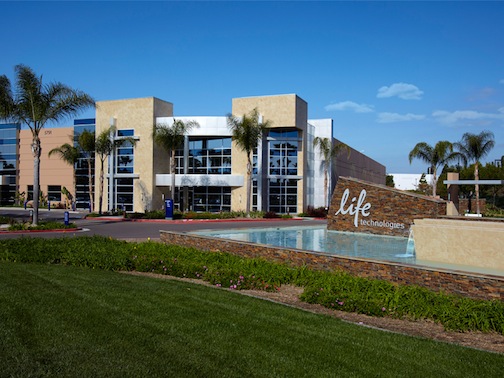Daily Business Report-Aug. 20, 2018
Advocates for Prop 5 say it would induce more seniors to move homes. (Photo: CALmatters)
California Election 2018
Should Baby Boomers get a
property tax break to move?
By Matt Levin | CALmatters
Proposition 5, which California voters will decide on this November, allows homeowners age 55 and up to receive a major break on their property taxes when they move homes. Sponsored by the California Association of Realtors, the initiative attempts to address a problem familiar to many Californians of a certain age: You want to move from your empty nest, but you’re scared of the new taxes you’d have to pay on a downsized property.
That dilemma is a byproduct of Proposition 13, the landmark 1978 initiative that capped how much local governments can levy homeowners on escalating home values. If you bought your home in 1988, you’re still paying property taxes based of the value of your home when the Soviet Union was still in existence. It’s a pretty great deal. But try to move into a different—and invariably more expensive—home at today’s prices, and your property taxes will jump dramatically. Those property tax bills could be tough for older homeowners on fixed incomes to afford.
“These are largely larger family homes,” said Steve White, president of the Realtors association. “If these folks were able to sell, then folks in (younger) generations would be able to purchase.”
The Realtors argue that Prop. 5 will induce more senior homeowners to sell their homes and buy new ones. Obviously that’s good for their commissions. But beyond allowing older homeowners to perhaps move closer to their children, the Realtors argue it would bring a flood of new homes to the market perfect for younger households starting their families.
Prop. 5 is opposed by local governments and public employee unions such as teachers and firefighters, who say the initiative is a costly giveaway to wealthy homeowners and the real estate industry. There are plenty of property tax protections already in place for senior homeowners who truly want to downsize. Because of a similar proposition passed decades ago, homeowners age 55 and up can buy a new home of equal or lesser value to their current property anywhere in their own county and retain their Prop. 13 property tax savings. Prop. 5 would allow senior homeowners to buy more expensive homes anywhere in California and still get a large tax break.
“What the real estate industry is really trying to do with this measure is turn the market and drive up prices so their end profit is really to their benefit,” said Dorothy Johnson, an advocate for the California State Association of Counties, which oppose the measure.
The Realtors could not have been pleased with the analysis Prop. 5 received from the Legislative Analyst’s Office, which voters will see included in their sample ballots this fall. It concludes that Prop. 5 would eventually costs local governments and schools $2 billion a year in revenue, and that the vast majority of Baby Boomers who would benefit from the initiative were likely going to move anyway. In other words, the initiative was not likely to induce a lot of people to move or result in lower home prices.
That’s partly why the Realtors have pursued a somewhat odd political strategy—while pushing for Prop. 5’s passage this fall, they’re already planning to put a very similar initiative on the ballot in 2020. That initiative would provide the same property tax breaks for older homeowners, but would also close some Prop. 13 loopholes to lessen the cost on local governments.
___________________
Jobless rate for San Diego County
drops to 3.5 percent in July
Non-farm employment up 21,200 over the year, but down 14,000 over the month due to seasonal losses
The unemployment rate in the San Diego County was 3.5 percent in July, down from a revised 3.7 percent in June and below the year-ago estimate of 4.4 percent, the state Employment Development Department reported.
This compares with an unadjusted unemployment rate of 4.4 percent for California and 4.1 percent for the nation during the same period.
Between June 2018 and July 2018, total non-farm employment decreased by 14,400 jobs, declining from 1,486,100 to 1,471,700. Total farm deployment decreased by 100, down to 9,000.
- Typical for the month, government led all industry groups in losses, declining by 16,000 jobs. As the school year came to a close, employment decreased by 10,000 in local government educational services and 4,500 in state government educational services.
- Educational and health services also recorded characteristic losses, declining by 2,000. Educational services accounted for the majority of the contraction (down 1,900).
- Trade, transportation, and utilities recorded an employment decline of 1,300. Despite modest gains in retail trade (up 300), the industry group recorded a net decrease due to losses in wholesale trade (down 100).
- Professional and business services added 3,400 jobs, more than recovering from the declines of the previous two months. Gains were heavily concentrated in professional, scientific, and technical services (up 3,200). Between July 2017 and July 2018, total non-farm employment was up 21,200 from 1,450,500. Total farm added 200 jobs over the year.
- Professional and business services added 11,500 jobs over the year. Though gains were spread across sectors, professional, scientific, and technical services led the growth (up 7,300).
- In spite of month-over losses, over the year employment in educational and health services was up by 5,000. Gains came primarily from health care and social assistance (up 4,600).
Manufacturing (up 3,900), construction (up 2,600), other services (up 2,400), and government (up 1,700) also recorded increased employment.
- Leisure and hospitality saw the largest year-over decline in employment (down 3,300). Though both arts, entertainment, and recreation and accommodation and food services grew over the month, employment remained below the previous year (down 1,000 and 2,300 respectively).
___________________
Port approves pilot project to demo
seaweed farming in San Diego Bay
The Port of San Diego is supporting a pilot project to demonstrate the feasibility and co-benefits of seaweed aquaculture in San Diego Bay.
The Board of Port Commissioners has approved a one-year agreement with Sunken Seaweed LLC, an aquaculture start-up company led by two marine ecologists committed to pioneering sustainable seaweed aquaculture in San Diego.
The pilot project is part of the Port’s Blue Economy Incubator, established to assist in the creation, development and scaling of new water-dependent business ventures on San Diego Bay focusing on sustainable aquaculture and Port-related blue technologies.
“There is great potential for growth in the global commercial seaweed market,” said Rafael Castellanos, chair of the Board of Port Commissioners.
“One of the goals of this pilot project with Sunken Seaweed is to obtain valuable baseline information to help inform future potential seaweed aquaculture here in San Diego and throughout California.”
Sunken Seaweed will establish its seaweed pilot farm at the northwestern end of Grape Street Pier Number 1 along the North Embarcadero from which various seaweed species will grow from anchored lines. Sunken Seaweed will then conduct biological monitoring surveys and harvest several species of native marine macroalgae (larger seaweed species).
___________________

San Diego named 4th top
meeting destination
Cvent’s 2018 ranking of top meeting destinations around the world ranks San Diego as the fourth top spot in the United States.
Cvent, a national meeting software and services company, is the world’s largest platform for sourcing meetings and events. According to their press release, the meetings industry is strong. “More events are being held all over the globe,” according to Cvent which “highlights the overall strength and positive impact the meetings and events industry has worldwide.”
The top 5 cities from the survey:
Orlando, Florida
Las Vegas, Nevada
Chicago, Illinois
San Diego
Atlanta, Georgia
“We hear our customers tell us time and time again that San Diego is about the whole package,” said San Diego Convention Center Corporation President and CEO Rip Rippetoe, CVE. “Meeting planners say they choose the San Diego Convention Center because we go above and beyond to provide excellent customer service, plus our city boasts beautiful scenery, perfect weather, world-famous attractions and thousands of hotel rooms, many within walkingdistance.”
___________________

Veteran San Diego cop selected as chief
of community college district police department
The San Diego Community College District (SDCCD) has named San Diego Police Department veteran Capt. Joseph Ramos as its new chief of the district’s police department.
Ramos served with the San Diego Police Department for nearly 30 years in a number of different divisions, and he has been responsible for overseeing security planning for Comic-Con, the San Diego Pride Parade, and the 2016 Major League Baseball All-Star Game at Petco Park, among other events. In 2001 he was instrumental in developing San Diego’s Active Shooter and Rapid Deployment plan and since that time has trained thousands of officers from local, state, and federal agencies in the response and management of active shooter incidents.
Ramos is familiar with the SDCCD, having taught as an adjunct faculty member from 1995 to 2010. He also has developed strong relationships with community groups during his nearly three decades with the city.
A native of Los Angeles, Ramos holds a bachelor of science degree in criminal justice and law enforcement administration from San Diego State University. He leaves the San Diego Police Department as commander of its Communications Division, where he managed a diverse group of almost 200 employees.
___________________

Del Mar Racetrack chosen to host
2021 Breeders’ Cup
The Del Mar Racetrack has been named host site for the 2021 Breeders’ Cup World Championships, thoroughbred horse racing’s most prestigious international event. It will be the second time Del Mar has hosted the event.
Breeders’ Cup also announced that the event will return to Santa Anita Park in Arcadia, Calif. on Nov. 1–2 in 2019 and to Keeneland Race Course in Lexington, Ky. on Nov. 6–7 in 2020.
Del Mar underwent an extensive development process to expand its luxury seating options and infield experiences for its first Breeders’ Cup in 2017. The Breeders’ Cup debut at Del Mar resulted in a record-breaking, two-day on-track wagering mark, while also generating an estimated $96.8 million in economic benefits for San Diego County, according to the Del Mar Thoroughbred Club.
___________________
Personnel Announcements
Mindy Wright Joins Intesa Communications Group

Intesa Communications Group has welcomed Account Manager Mindy Wright to their team, complementing an already deep strategic communications and government relations capacity with her extensive experience in copywriting, media relations, and social media.
Wright comes to Intesa from San Diego’s nonprofit sector where she specialized in public relations and development.




